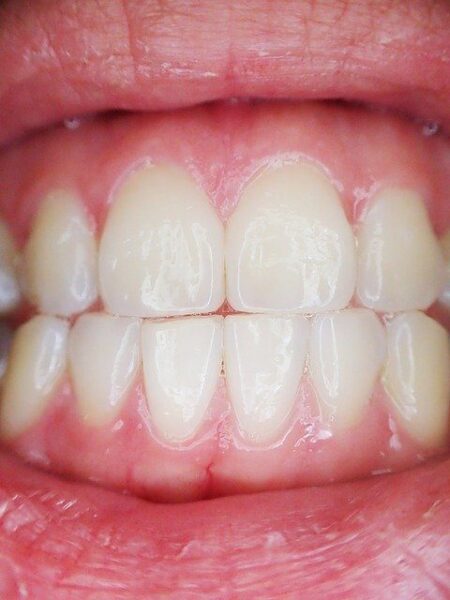This article may seem shocking to you. This is because we are explaining the health benefits of red wine. Of course, red wine is beneficial to health, but while you take it in limited amount as a supplement. In this article, you will not only learn the health benefits of drinking red wine, but also how red wine is made. Here we will also provide information on how to drink red wine and its quantity. After knowing the great health benefits of red wine, include it as a healthy diet only after taking medical advice.
Also, don’t forget to consume it in limited quantity. At the same time, it is right to give priority to medical treatment in a serious illness. We would also recommend that red wine not be consumed just as a hobby or fun.
*Note: The health benefits of red wine are described in this article as medicine. We does not promote alcohol intake at all. Therefore, it is also important to consult a doctor about its intake.
What Is Red Wine And How Many Types Is It?
Red wine is made from black grapes, but the colour of the wine may vary. The color of a wine may be purple, red, and can be brown. The commonly used wine is made up of two major red grape varieties, the Kotsifali and Mandilari. Wine made from Kotsifali is light in colour, but is high in alcohol. On the other hand, red wine made from Mandilari is dark red in colour. This is due to anthocyanic and tannic content. These two components cause variations in the colours of grapes.(1)
Types of Red Wine.
However, there are many types of red wine. It is not possible to tell all about in the same article. So, we are talking about some of the major varieties here. Each wine is known for its distinct specialty.(2)
- Syrah: This red wine is also known as shiraz. This variety is a little spicy and dark red in colour. It is not made in large quantities. Some of its varieties are long lasting and have a very sharp flavour.
- Merlot: It is a soft variety of red wine. This variety is a good option for those who want to consume red wine for the first time.
- Cabernet: This red wine is one of the best varieties in the world, which is well loved.
- Malbec: This red wine is made in Bordeaux, France and is often mixed with the carbonate and merlot variety of red wine.
- Pinot noir: It is counted among the most important red wine, which is very difficult to make.
- Zinfandel: It is the world’s most artistic red wine.
- Sangiovese: This is Italian red wine. It has a berry-like test.
- Barbera: It is similar to some merlot, but it is not very popular.
Is Red Wine Good For Health?
Red wine is mainly made up of water, carbohydrates, minerals and polyphenols. Wine contains substances that can have a significant impact on heart diseases and some chronic diseases. For example, we mentioned above that red wine is mainly made from grapes and grapes are rich in a variety of antioxidants.
Especially its resveratrol antioxidants can help to keep the heart healthy. Their presence in food and drink can reduce the risk of heart diseases, some cancers and diabetes. Not only that, consumption of red wine can also help in lowering blood pressure among hypertension patients.(3),(4)
List of Health Benefits of Red Wine Drink.
Here we are explaining the health benefits of drinking red wine, but before that we want to make it clear that red wine is not a cure for any disease. It can only reduce their symptoms and effects to some extent. At the same time, it needs to be consumed in limited quantities, so in the article we will further show how much red wine should be consumed. Now learn the health benefits of red wine:
- Liver.
- Healthy Heart And Cholesterol.
- Brain.
- Hypertension.
- Diabetes.
- Prevent Cancer.
- Depression.
- Increase Omega 3 Fatty Acids.
- Increase Immunity.
- Beneficial For Eyes.
- For Bones.
- Provide Better Sleep.
- Wine For Teeth.
- For Parkinson’s Disease.
- For Lung Health.
- Prevent Obesity.
- For Fertility.
- Skin And Anti Aging.
- Red Wine For Acne.
- Red Wine For Hair.
1. Liver.
Let us make it clear that if someone is already suffering from liver problems, he or she should not consume red wine. However, a research has confirmed that consuming less or balanced amounts of red wine on doctor’s advice can be beneficial for the hepatoprotective i.e. liver.

This can be due to the antioxidant effect of the resveratrol present in red wine. Also keep in mind that excessive consumption of it can also cause liver damage.(5) Therefore, it is better to ask the doctor once in a while how much it is right to take every day.
2. Health Benefits of Red Wine for the Heart And Cholesterol.
Anyone can be at risk of cholesterol problem and heart disease. In such a situation, it is important to pay attention to it in time. Some may be surprised to know that drinking red wine here can have benefits. A research published by NCBI (National Centre for Biotechnology Information) found that red wine contains antioxidant components like resveratrol, proanthocyanidin and quercetin.

These components can reduce the problem of atherosclerotic – accumulation of fat, cholesterol and other substances in the arteries, by reducing oxidative stress in both animals and humans. So, it is concluded that consumption of a balanced amount of red wine could help to reduce cardiovascular risk.(6),(7)
Some other studies have also proved that red wine can also effective to control cholesterol level. Keep in mind that this does not mean that anyone starts consuming red wine. If someone does not consume alcohol or someone has serious heart problems, be sure to consult a doctor before consuming red wine for the first time.(8)
3. Brain.
Red wine can also be effective for the brain. Its intake can be beneficial for the brain and nervous system. It can have a protective effect on the brain.

This can be caused by the resveratrol present in red wine.(9) This effect also depends largely on the amount of red wine. Excessive consumption of it can cause other health problems.
4. Hypertension.
High blood pressure can cause heart attack, kidney problems and eye problems.(10) In this case, the risk of hypertension can be reduced to some extent by consuming red wine. According to a report by Harvard Medical School, non-alcoholic red wine can be consumed regularly. Wine can control blood pressure by preventing damage to arteries.

Red wine contains antioxidants like polyphenols. These polyphenols become more beneficial when it does not contain alcohol.(11) Therefore, non-alcohol red wine can be consumed after consulting a doctor.
5. Diabetes.
Red wine can also be beneficial for diabetes. Research was conducted on red wine drinkers and people who did not drink red wine to confirm this. The research showed a decrease in glucose levels among those who drank a limited amount of red wine. They found a lower risk of diabetes than those who did not drink red wine.

In addition, several other studies have also revealed that red wine can help to reduce the risk of type 2 diabetes. Just keep in mind that, only after the medical advice you can include it in the diet.
| Read Now: 6 Incredible Yoga Poses For Diabetes |
6. Prevent Cancer.
Often, it is read that alcohol consumption can increase the risk of cancer. In such a situation, prevention of cancer from consumption of red wine can be shocking. According to a report, red wine contains resveratrol. It can destroy pancreatic cancer cells. This can reduce the risk of pancreatic cancer.(12) Keep in mind that it is not a cure for pancreatic cancer.
On the other hand, according to animal investigations, red wine can prevent esophageal cancer. The main reason behind this can be the lignan – a type of polyphenol present in red wine. In addition, flavonoids present in red wine can also reduce the risk of gastric cancer. In addition to all this, the resveratrol present in red wine also has anti-cancer properties. Despite all these scientific evidences, more research needs to be done on red wine regarding cancer.(13)

Keep in mind that if a person is suffering from cancer, he or she should consult a doctor. Cancer cannot be cured only with the help of home remedies and measures like red wine.
7. Mental Health Benefits of Red Wine.
A small amount of red wine can also be consumed to improve mental health, as it prevent depression. According to a research published on the NCBI website, consuming less red wine can reduce depression.

Also keep in mind that excessive consumption of it can also increase the risk of depression.(14) More research is needed in this regard. Therefore, it is better to consult a doctor or an expert about this.
8. Increase Omega 3 Fatty Acids.
Omega 3 fatty acids are essential for the proper development of the brain. Not only that, it is also necessary to keep the heart healthy. However, the body receives omega 3 fatty acids from many foods.(15) At the same time, if a balanced amount of wine is consumed, it can increase omega 3 fatty acids.
A scientific research found those who consume limited amount of red wine have high amounts of omega 3 fatty acids. This comparison was made to those who did not consume wine. However, it still needs extensive research.(16) If someone wants to consume wine on the basis of this research, be sure to consult a doctor once.
9. Increase Immunity.
In order to protect the body from virus and infection, the immune system i.e. immunity must be strong.(17),(18) There has been a lot of arguments among scientists about the relationship between alcohol and immune power. According to a research paper published by NCBI, beverages rich in polyphenols contain wine and beer. Taking wine in small to medium quantities can improve the immunity of adults.(19)
Despite this scientific evidence, doctors are not support that wine is right for immunity. In fact, overconsumption can also have a adverse effect on immune power. That is why more research is needed in this regard.
10. Beneficial For Eyes.
Red wine is also beneficial for the eyes. According to a research done by scientists on mice found that the special element of red wine, resveratrol can reduce the risk of vision related problems by increasing the level of glutathione i.e. a type of antioxidant in the body.(20)

Resveratrol can also have a protective effect on the lens of the eyes.(21) In addition, it can also prevent vision related problems in diabetes. These researches have just been done on animals. Therefore, more research is needed on how effective red wine is for humans with regard to the eyes.
11. For Bones.

As you grow older, the body can be prone to a variety of diseases. These include bone problems. In such a situation, it is important to take care of bones and eat properly. Wine can be beneficial in keeping bones healthy. According to a scientific study, consuming less wine can protect bones from fractures and mass loss. Wine is rich in phenolic compounds, phytoestrogens and natural antioxidants, which can be beneficial for bones.(22) More research needs to be done in this regard.
12. Provide Better Sleep.
Sleeplessness is also a major problem that can affect physical and mental health. Red wine can be beneficial for good sleep. As we have mentioned, wine is made from grapes which contain a hormone called melatonin. This hormone can improve sleep quality.(23)

It can be inferred that consuming wine can provide a good sleep. At present, there is a lack of accurate scientific research in this regard. It is better to use it only on the advice of a doctor.
13. Red Wine For Teeth.
Red wine is also beneficial for teeth. A scientific research clearly mentions that resveratrol present in red wine can be effective in gum problems. Also, the antimicrobial effects present in red wine can be effective in protecting teeth from bacteria.

At present, more research needs to be done in this regard.(24) Also, it is better to consult your dentist before using red wine for teeth.
14. For Parkinson’s Disease.
Red wine can also prevent Parkinson’s disease. It is a disease in which some brain cells stop working which help in controlling the movement of the body. A person suffering from this disease has difficulty in maintaining the balance of the body.(25)
Research published on the NCBI website reveals that the resveratrol and quercetin compounds present in red wine can display neuroprotective effects against Parkinson’s disease.(26)
15. For Lung Health.
Consuming a limited amount of red wine can also help to keep the lungs healthy. This is confirmed by a research on the NCBI website. According to this research, exposure to oxidant effect can damage the lungs and also affect lung function.

On the other hand, the resveratrol present in red wine has antioxidant effects, which can prevent lung damage caused by oxidant. Also keep in mind that consuming too much of it can also be harmful.(27)
16. Prevent Obesity.
Red wine can also control overweight or obesity. Research on mice reveals that consuming a limited amount of red wine can prevent excessive weight gain.(28)

However, more research needs to be done on how much influence it has on humans at the moment.
17. For Fertility.
Red wine can also increase fertility. In fact, oxidative stress can affect fertility. In this case, antioxidant-rich foods or beverages can help in boosting fertility by reducing oxidative stress. Red wine is also included in antioxidant-rich beverages.(29) At present, more research needs to be done on this subject.
18. Skin And Anti Aging.
Red wine can be beneficial not only for health but also for the skin. The resveratrol present in red wine can protect the skin from harmful rays of sunlight. This can help to avoid the premature aging effects on the skin.

Also, the anti-inflammatory properties present in it can be beneficial for the skin.(30) Not only that, resveratrol can also be helpful in preventing skin cancer.(31)
19. Health Benefits of Red Wine for Skin.
As we mentioned above, red wine is also effective for skin which can relieve acne. In fact, resveratrol also has anti-acne properties that can help to reduce acne.

It has also antibacterial properties that prevent bacteria from growing. This property can help to relieve acne caused by bacteria.(32)
20. Red Wine Benefits For Hair.
According to a research reveals that consuming red wine rich in flavonoids can be beneficial to relieve hair loss during the menopause period.(33)

At present, more research on the subject is required.
Nutrients of Red Wine.
Nutrient content per 100 grams
| Nutrient | Per 100gm |
| Water | 86.49 gm |
| Energy | 85 kcal |
| Protein | 0.07 g |
| Carbohydrates | 2.61 g |
| Sugar | 0.62 g |
| Calcium | 8 mg |
| Iron | 0.46 mg |
| Magnesium | 12 mg |
| Phosphorus | 23 mg |
| Potassium | 127 mg |
| Sodium | 4 mg |
| Zinc | 0.14 mg |
| Copper | 0.011 mg |
| Selenium | 0.2 micrograms |
| Thiamin | 0.005 mg |
| Riboflavin | 0.031 mg |
| Niacin | 0.224 mg |
| Vitamin B6 | 0.057 mg |
| Folate, Total | 1 microgram |
| Folate, Food | 1 microgram |
| Folate, DFE | 1 microgram |
| Carotene, Beta | 1 microgram |
| Lutein+ Zeaxanthin | 6 micrograms |
| Vitamin K | 0.4 micrograms |
| Alcohol, (ethyl) | 10.6 gm |
How Red Wine Is Made?
The process is of red wine is very interesting. We are explaining it in detail below.(34)
Process of Making Red Wine:
Destemming Process.
First of all, black grapes are plucked and taken to the winery. When the grapes are broken, they are accompanied by leaves and twigs. They can make wine tests useless or more bitter. In this case, grapes and twigs are separated during the destemming Process.
Crushing.
Grapes are Crushing after the destemming process. How much grapes are crushed depends on the wine maker. The crushed mixture is poured through the pipe into a large stainless steel vessel and sent forward for fermentation process.
Fermentation Process.
Temperature is controlled during fermentation, as fermentation produces a lot of heat. If this temperature is not controlled, the wine can be bitter and spoil the taste. In this process, solids and liquids are separated, i.e., juice is separated from the fruit. The process of extracting juice from grapes is microbial transformation, also known as malolactic fermentation. In this process, the effect of bacteria converts the malic acid present in grapes into lactic acid. Later, red wine is filtered and extracted into another vessel. The wine is then placed in a container made of stainless steel or wood before bottled. Any taste defect is corrected here.
Final Process (Filtration).
Finally wine is passed through the filler process. Here any bacteria and unnecessary micro-substances are excluded. After this process, red wine is finally filled in glass bottles with cork stoppers.
How To Buy And Store Red Wine?
After knowing the health benefits of red wine, many readers may be wondering how to buy and store good red wine for longer. Keeping this curiosity of the readers in mind, we are explaining how to buy and store red wine here.
Tannin (a type of polyphenol) – The less tannin in wine, the lighter it will taste and less toxic. So, choose low tannin wine, especially those who are going to consume it for the first time. The options for low tannin wine are Pinot Noir, Barbera and Sangiovese. On the other hand, there are options for high tannin wine –Cabernet Sauvignon, Syrah and Nebbiolo.
Labeling – Check from which grapes the wine is made of and from which area.
Brand – Also take care of the brand of red wine while buying wine. Try to choose only a well-known brand.
Blend – Tell us that most red wine is blended. All you have to do is choose blend wine of your choice.
Body – Here we mean how light or heavy wine can be for a person. The wine body is divided into three categories. Wine that has the lowest alcohol content and easily dissolves in the mouth is light body wine. On the other hand, a medium body with a little more and more alcohol comes into the category of heavy body.
Oak – Red wine is often fermented in oak. This gives the wine a good texture.
Vintage – The older the wine, the better. So, when buying, see how old red wine is.
Price – Keep the red wine price in mind as well. It should not weigh heavily on the buyer’s pocket.
How To Store Red Wine?
- Proper storage of red wine is essential to maintain its quality and taste. Since it is low in alcohol, there is a fear of getting spoiled and more care is needed.
- Always keep the red wine bottle slightly crooked so that it is moist. Keeping the bottle straight can dry the cork of the bottle and air it, which can also spoil the wine.
- People usually think that the older the wine, the better. Wine tastes better with age, but not all wine. Most red wine is made to use immediately. Keeping them for a long time can spoil them. This type of wine does not taste better with aging, but can be stored for a short time with good storage.
- Red wine should be kept away from the ultraviolet rays of the sun, as it can spoil the taste of the wine. It should be kept in a dark bottle to maintain the quality of wine. Yet these bottles cannot completely secure the wine.
- You can put a bottle of red wine in a box or wrap it with a cloth. Alcohol should be kept away from chemicals, food and other household items. The cork of the bottle has small holes. Therefore, they can easily absorb any smell in themselves. This can spoil the taste of the wine.
- Temperature means a lot to maintain the quality of wine. The ideal temperature for serving red wine should be between 50 and 65 degrees Fahrenheit. This is because serving hot wine makes the taste of alcohol feel more. On the other hand, more cold red wine tastes more bitter and astringent.
- Keep the bottle straight for a while before serving the wine, so that the fine particles present in the wine settle down.
- Once the bottle is opened, try to finish it in two to three days, as the quality of the wine begins to deteriorate as soon as oxygen starts entering the red wine.
- Store it in the refrigerator for a day or two and remove the bottle first and consume it later to arrive at the appropriate temperature.
- Always serve red wine in a wine glass to enjoy it completely.
How to Use Red Wine?
Red wine can be used in various ways.
- Carnivores can use red wine while preparing food.
- Red wine can be mainly used as a flavouring agent.
- It can be consumed directly.
- Some special recipes can also be made from red wine like Red Wine Risoto or Grilled Salmon Red Wine Butter.
- Face packs can also be made from red wine and applied on the face. Curd and honey can be mixed with red wine to prepare face packs. Do a patch test once before using red wine face pack.
- If a person wants, he can apply red wine on his face.
- Red wine can also be applied to the hair. After washing the hair, add a little conditioner to the red wine and apply it on the hair and wash the hair after a few minutes.
How To Drink Red Wine?
- First choose your favorite red wine.
- Then choose the right wine glass.
- Then open the wine bottle properly and pour the wine into the glass.
- Now stir the glass lightly, sniff and then consume.
- Cool and drink wine to enjoy its taste.
Red Wine Daily Dosage.
Now the question arises as to how much red wine should be consumed.
- Women can consume about 118 ml of wine throughout the day.
- Men can consume about 236 ml of wine.
*Note: This quantity also depends on the health of the person. Therefore, we will still advise that anyone who wants to consume it must consult a doctor first. FreakToFit does not promote alcohol consumption.
Side Effects or Disadvantages of Red Wine.
Drinking wine has both advantages and disadvantages. So far, we have mentioned the health benefits of red wine in the article, but consuming it in excessive quantities can also have some harmful effects, which we are discussing below. The side effects of red wine are as follows:
- Drinking too much red wine can also lead to its addiction.
- Red wine contains alcohol. In this case, excessive consumption of it can cause liver disease.(35)
- Pregnant women or lactating women should avoid consuming wine. Consumption of alcohol can cause a variety of health problems to the baby in the womb. This includes fetal alcohol syndrome. This may affect the mental and physical development of the baby.(36)
- Its overconsumption can increase the risk of diseases like obesity, diabetes and cancer.(37)
- Lifestyle changes can also affect mutual relations.
Frequently Asked Questions:
1. What should be the temperature to serve red wine?
Red wine should have a temperature of 62 to 68 degrees Fahrenheit to serve.
2. Is red wine vegetarian?
It is a little difficult to tell if red wine is vegetarian or not. In fact, it depends on the method of its making. On the other hand, if the bottle has a green point mark, it will be considered vegetarian.
3. What is the amount of alcohol in red wine?
Red wine can contain 10.6 grams of alcohol.
4. Is it healthy to consume a glass of red wine at night?
There is currently a lack of accurate information on if it is healthy to consume a glass of wine at night. Therefore, it is better to consult the doctor for information on this subject.
5. How does red wine taste?
It is difficult to tell for the time being what red wine tastes like, as there are many types of it.
6. Is it okay to drink red wine every day?
Consuming red wine daily can be harmful, as it can lead to addiction, which can lead to the side effects of red wine mentioned in the article. So, you should consume red wine in limited quantity to grab the maximum health benefits.
7. Is red wine bad for your liver?
Yes, if red wine is consumed in large quantities, it can be harmful. In fact, red wine contains alcohol, which can cause excessive consumption of liver disease.
Bottom Line.
After reading the health benefits of red wine in this article, many people may want to include it in their diet. Before that, let us also make it clear that people who do not consume alcohol should not choose it as an option. Drinking red wine has several disadvantages and can adversely affect health. Therefore, you should consult a doctor, as the doctor can suggest you according to your age and health condition as to how much red wine should be consumed. Readers can also follow how to drink the red wine mentioned above. Red wine can be beneficial if taken in a balanced quantity as a medicine. We request readers to consume red wine properly and, if not needed, do not consume red wine just for fun.
+54 Sources
Freaktofit has strict sourcing guidelines and relies on peer-reviewed studies, educational research institutes, and medical organizations. We avoid using tertiary references. You can learn more about how we ensure our content is accurate and up-to-date by reading our editorial policy.1. Red Wine Age Estimation by the Alteration of Its Color Parameters: Fourier Transform Infrared Spectroscopy as a Tool to Monitor Wine Maturation Time : https://www.hindawi.com/journals/jamc/2017/5767613/2. The Health Benefits of Red Wine : https://scholarcommons.sc.edu/cgi/viewcontent.cgi?article=1038&context=senior_theses3. Contribution of Red Wine Consumption to Human Health Protection : https://www.ncbi.nlm.nih.gov/pmc/articles/PMC6099584/4. Grapes, wines, resveratrol, and heart health : https://pubmed.ncbi.nlm.nih.gov/19770673/5. Dual effect of red wine on liver redox status: a concise and mechanistic review : https://pubmed.ncbi.nlm.nih.gov/26026610/6. Red wine: A drink to your heart : https://www.ncbi.nlm.nih.gov/pmc/articles/PMC3023893/7. Atherosclerosis : https://medlineplus.gov/atherosclerosis.html8. Wine and heart health : https://medlineplus.gov/ency/article/001963.htm9. Wine: An Aspiring Agent in Promoting Longevity and Preventing Chronic Diseases : https://www.ncbi.nlm.nih.gov/pmc/articles/PMC6165230/10. High blood pressure – adults : https://medlineplus.gov/ency/article/000468.htm11. Non-alcoholic red wine may lower blood pressure : https://www.health.harvard.edu/blog/non-alcoholic-red-wine-may-lower-blood-pressure-20120912529612. Resveratrol, a red wine polyphenol, suppresses pancreatic cancer by inhibiting leukotriene A₄hydrolase : https://pubmed.ncbi.nlm.nih.gov/20952510/13. Alcohol : https://www.cancer.gov/about-cancer/causes-prevention/risk/alcohol14. Wine: An Aspiring Agent in Promoting Longevity and Preventing Chronic Diseases : https://www.ncbi.nlm.nih.gov/pmc/articles/PMC6165230/15. Omega-3 fats – Good for your heart : https://medlineplus.gov/ency/patientinstructions/000767.htm16. Interactions of wine drinking with omega-3 fatty acids in patients with coronary heart disease: a fish-like effect of moderate wine drinking : https://pubmed.ncbi.nlm.nih.gov/18082510/17. Immune response : https://medlineplus.gov/ency/article/000821.htm18. Overview of the Immune System : https://www.niaid.nih.gov/research/immune-system-overview19. Moderate alcohol consumption and the immune system: a review : https://pubmed.ncbi.nlm.nih.gov/17922947/20. Resveratrol and Ophthalmic Diseases : https://www.ncbi.nlm.nih.gov/pmc/articles/PMC4848669/21. Resveratrol: How Much Wine Do You Have to Drink to Stay Healthy? : https://www.ncbi.nlm.nih.gov/pmc/articles/PMC4942868/22. Wine and bone health: a review : https://pubmed.ncbi.nlm.nih.gov/25832032/23. Dietary Sources and Bioactivities of Melatonin : https://www.ncbi.nlm.nih.gov/pmc/articles/PMC5409706/24. Inhibition of Oral Pathogens Adhesion to Human Gingival Fibroblasts by Wine Polyphenols Alone and in Combination with an Oral Probiotic : https://pubs.acs.org/doi/10.1021/acs.jafc.7b0546625. Parkinson disease : https://medlineplus.gov/ency/article/000755.htm26. The emerging role of nutrition in Parkinson’s disease : https://www.ncbi.nlm.nih.gov/pmc/articles/PMC3945400/27. Wine, Spirits and the Lung: Good, Bad or Indifferent? : https://www.ncbi.nlm.nih.gov/pmc/articles/PMC1500928/28. Moderate red-wine consumption partially prevents body weight gain in rats fed a hyperlipidic diet : https://pubmed.ncbi.nlm.nih.gov/16169198/29. Nutrition and Female Fertility: An Interdependent Correlation : https://www.ncbi.nlm.nih.gov/pmc/articles/PMC6568019/30. Skin Ageing: Natural Weapons and Strategies : https://www.ncbi.nlm.nih.gov/pmc/articles/PMC3569896/31. The Grape Antioxidant Resveratrol for Skin Disorders: Promise, Prospects, and Challenges : https://www.ncbi.nlm.nih.gov/pmc/articles/PMC3060966/32. Resveratrol as an active ingredient for cosmetic and dermatological applications: A review : https://www.researchgate.net/publication/324731185_Resveratrol_as_an_active_ingredient_for_cosmetic_and_dermatological_applications_A_review33. Nutrition of women with hair loss problem during the period of menopause : https://www.ncbi.nlm.nih.gov/pmc/articles/PMC4828511/34. Influence of Winemaking Procedure and Grape Variety on the Colour and Composition of Young Red Wines : https://www.researchgate.net/publication/250082205_Influence_of_Winemaking_Procedure_and_Grape_Variety_on_the_Colour_and_Composition_of_Young_Red_Wines35. Alcoholic liver disease : https://pubmed.ncbi.nlm.nih.gov/19655694/36. Fetal alcohol syndrome: What you should know about drinking during pregnancy : https://www.ncbi.nlm.nih.gov/pmc/articles/PMC2794811/37. Health risks of alcohol use : https://medlineplus.gov/ency/patientinstructions/000494.htm38. Kotsifali : https://winesofgreece.org/varieties/kotsifali/39. Mandelaria : https://winesofgreece.org/varieties/mandelaria/40. Molecular Plant : https://www.sciencedirect.com/science/article/pii/S167420521460398141. Tannic Acid : https://www.webmd.com/vitamins/ai/ingredientmono-217/tannic-acid42. Syrah Wine : https://www.wine-searcher.com/grape-1651-syrah43. Merlot – What Is Merlot? : https://vinepair.com/wine-101/merlot/44. What is Cabernet Sauvignon? A Guide : https://vinepair.com/wine-101/what-is-cabernet-sauvignon/45. What is Malbec Wine? Plus 4 Amazing Facts : https://winefolly.com/deep-dive/what-is-malbec-wine/46. Pinot Noir : https://winefolly.com/grapes/pinot-noir/47. Zinfandel (Primitivo) : https://winefolly.com/grapes/zinfandel/48. What Is Sangiovese Wine? : https://www.thespruceeats.com/sangiovese-wine-grape-351122949. Guide to Barbera Wine : https://winefolly.com/deep-dive/guide-to-barbera-wine/50. Resveratrol : https://www.webmd.com/vitamins/ai/ingredientmono-307/resveratrol51. Polyphenols in Chronic Diseases and their Mechanisms of Action : https://www.sciencedirect.com/topics/medicine-and-dentistry/proanthocyanidin52. Quercetin : https://www.webmd.com/vitamins/ai/ingredientmono-294/quercetin.53. Lignans : https://www.sciencedirect.com/topics/neuroscience/lignans54. What is Malolactic Fermentation? The Buttery Taste in Wine : https://winefolly.com/deep-dive/what-is-malolactic-fermentation-the-buttery-taste-in-wine/

 Workout
Workout
 Meditation
Meditation


 Stories
Stories


 Podcast
Podcast E-book
E-book











